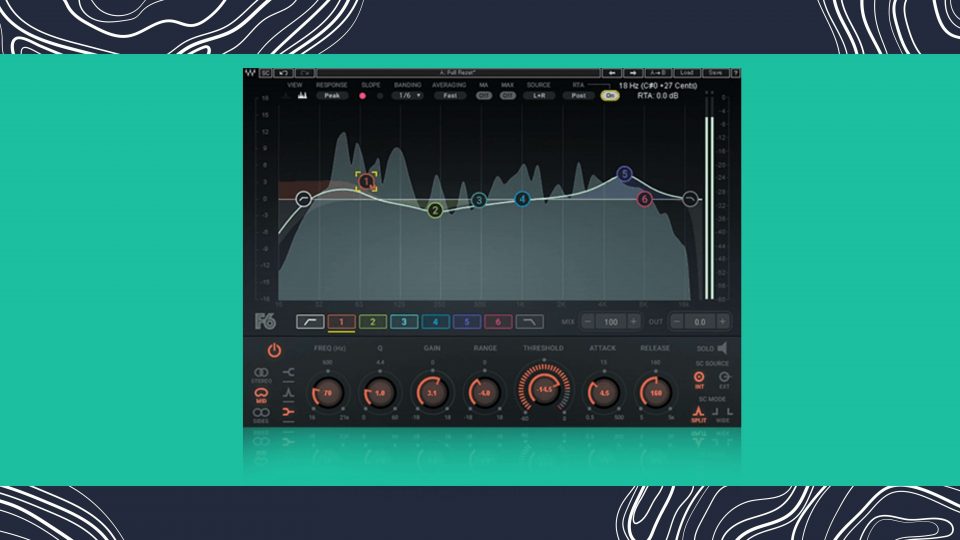What is Dynamic EQ? When Should You Use One?
Of all the different types of EQs available, dynamic EQs are one fo the most impressive & versatile.
It’s common knowledge that good EQ practice is important for the final quality of your mixdown and sounds. When it comes to the balance of your mix, compression & EQing are on par with one another for usefulness. So what is a dynamic EQ? Well, dynamic EQs bring the best of both!
A dynamic EQ is a mixing tool that, ultimately, allows you to tweak both frequency and dynamics of a sound, channel or entire mix.
What is a Dynamic Equalizer?
A dynamic EQ blends the equalisation processing of a traditional EQ with the dynamic control that you’d find in a compressor or expander.
Dynamic EQs do work much like traditional EQs and parametric EQs, but with additional processing. Rather than a predetermined amplitude value for the individual EQ bands, you can adjust the amplitude value of each band based on the power of those frequencies in the incoming signal.
A dynamic EQ blends the equalisation processing of a traditional EQ with the dynamic control that you’d find in a compressor or expander.
How Does A Dynamic EQ Work?
It actually sounds more complicated than it is. To break it down better, let’s talk about a parametric EQ.
A parametric EQ, like all EQs, is a filter, and the characteristics of a filter will determine how it affects the frequencies of your signal. To be more specific, a parametric EQ is a collection of filters – each EQ band is its own filter that allows you to manipulate the frequency band of your signal.
Moreover, each frequency band/filter on a parametric EQ has its own set of controls. An EQ band has its own type, slope, Q and gain.
EQ Parameters
Type refers to the shape of the filter (bell, shelf, notch, low/high pass) and the slope is all about the aggressiveness of the filter/band.
Q, on the other hand, is short for quality factor. It represents the bandwidth (the width of the band) of an EQ band. And gain refers to the intensity of boost or cut you apply to your EQ band.
Again, each of these bands has pre-determined values on a parametric EQ. But on a dynamic EQ, each value can change based solely on the input signal.
What’s very cool about dynamic EQs is that you can control these parameters like would control a compressor!

If your incoming signal breaches the dB value you set as your threshold, the dynamic functionality of the EQ will kick in – just like a compressor.
If you set it to behave like a compressor then it will begin attenuating the level of the EQ band you’ve selected. But if you set it to behave like an expander then it will begin boosting the level of the band you’ve selected.
You can choose the style of dynamics processing by setting the range value of each band. For example, positive values will expand a band while negative values attenuate a band.
When to Use A Dynamic EQ
Traditional EQ’ing and compression are usually enough for most mixing situations. As long as you got the sound sounding good at its source, you shouldn’t really need a dynamic EQ.
However, a dynamic EQ can be a lifesaver in a handful of situations. If you need precise control that doesn’t compromise any transparency, like boosting a sounds’ mids to cut through a particular part in your song, you can do this by applying some automation to the threshold and ratio controls of that band.
For example, a very common use for a dynamic EQ is attenuating frequencies that are all too apparent where they shouldn’t be. If your keys are a little too loud where your vocals should be the main focus, a dynamic EQ can solve this issue.
Starting out with the right sounds makes all the difference in your music productions.
The sampling revolution has risen in popularity and shaped music since the early 1970s. Sample culture continues to transform how millions of artists and producers do their thing in DAWs.
You too can break conventional norms, challenge the status quo, and open Pandora’s box of sound design.
Mixxed works with a growing number of sample labels and contributors to provide you with an affordable sample subscription service that’s more accessible than any before.
You’ll have access to our growing catalogue of loops, one-shots and sound effects that you can browse, download and keep forever for less than $3 a month.
Sign up today to find your sound!
